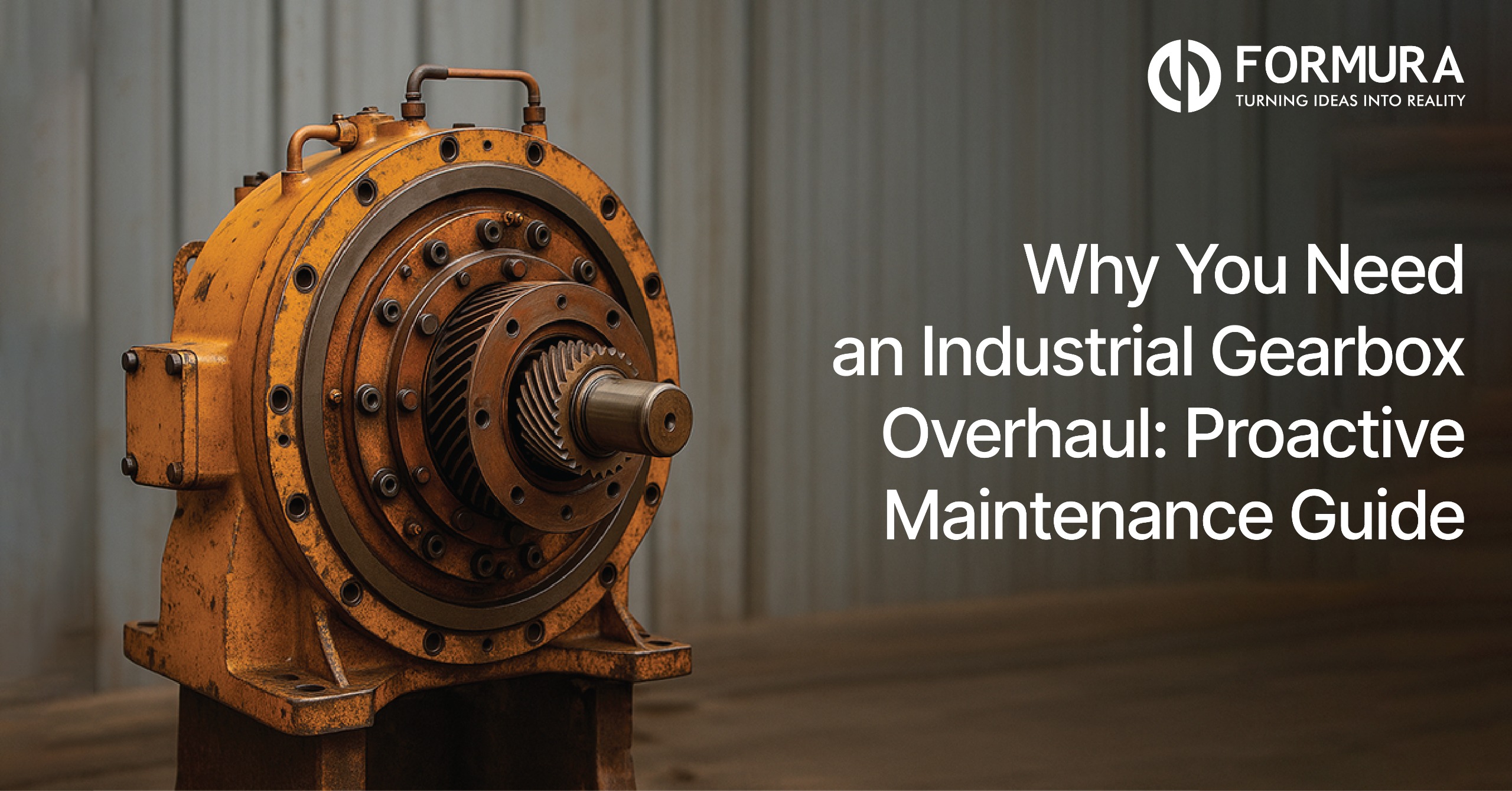Why You Need an Industrial Gearbox Overhaul: Proactive Maintenance Guide

Industrial gearboxes are essential in various industries, including manufacturing, cement, steel, mining, energy, and material handling, providing critical speed regulation and power transfer. As these systems operate under heavy loads, proactive maintenance is vital to prevent losses. Overhauling gearboxes protects your equipment, improves performance, and averts costly failures.
This guide covers the need for gearbox overhauls, when to consider them, the process, and what to expect from professional services.
An industrial gearbox is a mechanical system that transmits power from a motor to driven equipment, controlling torque and speed to match application requirements. Since they operate continuously under pressure, heat, and load, gearboxes experience gradual wear and tear.
Why are gearboxes critical?
- They ensure consistent production speed
- They protect motors from overload
- They manage torque and movement in key processes
- They maintain operational efficiency and safety
Risks of neglecting gearbox health:
- Unplanned plant shutdowns
- Catastrophic equipment failure
- Escalating repair expenses
- Production delays, safety risks, and lost revenue
A proactive gearbox overhaul helps avoid such scenarios by restoring the gearbox to optimal working condition before failure occurs.
The Case for a Proactive Overhaul (vs Waiting for Failure)
Many industries still follow reactive maintenance, repairing a gearbox only after it fails. However, a proactive overhaul approach is far more cost-effective.
| Reactive (Run-to-failure) | High downtime, emergency costs, unpredictable failures |
| Proactive (Scheduled overhaul) | Planned downtime, extended lifespan, controlled costs |
Why proactive overhaul is smarter:
- Overhaul costs are significantly lower than a complete replacement
- Restores efficiency and extends service life
- Prevents cascading failures (bearings, shafts, gears, and seals damage)
- Minimizes unexpected downtime that impacts production schedules
Signs Your Gearbox Needs an Overhaul
Look for these warning indicators:
- Unusual noises: grinding, whining, knocking
- Excessive vibration or imbalance
- Oil leaks or seal failures
- Overheating or abnormal operating temperatures
- Slipping gears or reduced power output
- Unstable oil pressure or frequent shutdowns
- Repeated minor repairs
Recurring breakdowns are often a sign that a full gearbox overhaul is more economical than ongoing patchwork repairs.
Also Read : Gear Failure: 8 Common Causes and Effective Prevention Tips Top Industrial Gearbox Maintenance & Inspection Tips for Peak Performance
What Exactly Is an Industrial Gearbox Overhaul?
A gearbox overhaul is a complete strip-down, inspection, repair, and restoration process that returns the gearbox to near-new condition. Unlike minor repairs, an overhaul addresses the root cause of failures.
Key steps in the gearbox overhaul process:
- Pre-overhaul inspection & diagnostics (vibration analysis, thermal checks, oil sampling, visual inspection)
- Gearbox removal and tagging for documentation
- Complete disassembly
- Deep cleaning of all components
- Detailed inspections and measurements (gears, shafts, bearings, seals, housings)
- Repair or replacement of worn/damaged parts — including machining or reverse engineering if required
- Reassembly with OEM-level precision (alignment, torqueing, sealing)
- Load testing and run-in trials
- Reinstallation and commissioning
- Post-overhaul monitoring and maintenance schedule
This comprehensive process ensures reliability, efficiency, and extended operational life.
Factors to Consider Before Overhaul (Repair vs Replacement)
Before you proceed, evaluate:
- Gearbox age and remaining life
- Degree of wear or internal damage
- Cost of gearbox overhaul vs new unit
- Downtime limitations
- Availability of spares or custom parts
- Future load/performance needs
- Criticality of the equipment to production
If the base body and gear profiles are still viable, overhaul is almost always the most economical choice.
Best Practices for a Successful Gearbox Overhaul
To ensure long-term performance, your gearbox services provider should follow:
- High-quality or OEM-spec replacement parts
- Proper documentation and labeling during teardown
- Accurate tolerance checks
- Precision alignment and balancing
- Correct lubrication and sealing standards
- Testing under real load conditions
- Post-overhaul vibration and oil monitoring
- Preventive gearbox inspection maintenance services
Benefits & ROI of Gearbox Overhauling
A professional gearbox repair, overhaul, and refurbishment delivers measurable returns:
- 40–50% cost savings vs complete replacement
- Increased equipment lifespan
- Reduced breakdown frequency
- Improved efficiency and smooth operation
- Higher productivity with planned maintenance windows
- Better safety and reduced risk of collateral damage
Common Mistakes & Risks to Avoid
- Using low-quality spare parts
- Poor cleaning or contamination during assembly
- Incorrect gear alignment or torque settings
- Insufficient testing before recommissioning
- No post-overhaul monitoring plan
Conclusion
A proactive industrial gearbox overhaul is one of the smartest maintenance strategies for any plant that relies on continuous operations. It protects your equipment, lowers lifecycle costs, and ensures your machinery performs reliably for years to come.
If you are looking for expert industrial gearbox services, Formura offers comprehensive end-to-end industrial gearbox solutions, including inspection, overhaul, refurbishment, repair, reverse engineering, and preventive maintenance support.
Consult Formura today to extend your gearbox life and eliminate unplanned downtime.